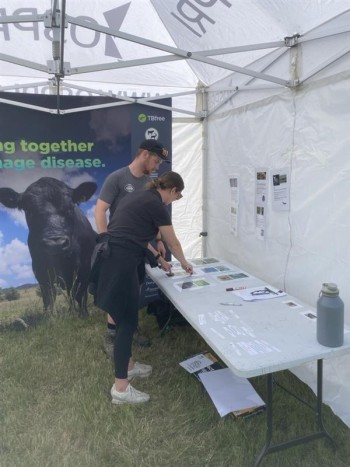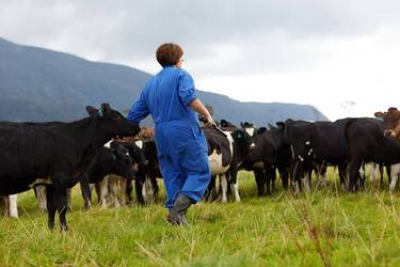 OSPRI brings disease management to young farmer competitions
OSPRI brings disease management to young farmer competitions
New Zealand's next generation of farmers will see very little TB in comparison to those families who farmed before them. Today, less than 20 infected herds remain in New Zealand, a long way from the 1700 afflicted in the 1990s. However, years of effort still lie ahead before the country can be declared TB-free, and it’s good mahi that can be undone by complacency.
Aware of the challenge, OSPRI’s Regional Partners worked on both the FMG Young Farmer and Junior Young Farmer contests this year to ensure the fight against TB isn’t out of mind - even though the disease seems out of sight.
Our team, across the country, worked together to develop and facilitate modules for both contests – pitting young participants against each other by testing their understanding of NAIT and TBfree.
Regional Partners travelled as far south as Mosgiel, and as far north as Whangarei, and were pleased to find our future farmers with a good appreciation of the importance of biosecurity. “It was great to see that many of the contestants already knew they had a role to play in disease management”, says OSPRI regional partner Danielle Holland. “While a few required a small nudge in the right direction, once they got it, they were away".
Junior contestants tackled essential traceability topics, such as determining the ideal placement of a NAIT tag. They also covered the issue of broken movement chains. Broken chains occur when an animal registered to one NAIT location is recorded in a movement from a different location - without a record of it previously being there. So, a lifetime traceability mystery. Armed with Animal Status Declaration (ASD) forms, many of the junior contestants cracked the case with skill.
Meanwhile, FMG Young Farmer of the Year contestants were tasked with a practical pest management challenge. They had to identify pests, assess the risks associated with their presence, and identify on-farm control methods. The focus was on wild pigs, deer, and possums, culminating in a hands-on challenge to build a standard possum cage trap.
We extend a big thank you to NZ Young Farmers, for welcoming OSPRI’s people and programmes into the 2024 competitions. For OSPRI, it’s proven to be a rewarding way to bring fresh eyes to the presence of TB, and to educate future farmers about how they can contribute to the disease’s eventual eradication.
 Moving Day 2024
Moving Day 2024
Moving Day has come and gone for another year, and we wanted to see how you got on. If you still have movements outstanding, here's what you need to do.
Moved farms with your herd?
Make sure you’ve created a new NAIT number, recorded your animal movements and deregistered your old NAIT number.
Also, ensure third-party software suppliers/stock agents have this new number, and you have assigned them access to your NAIT account as information providers.
Animals off at grazing?
Make sure you’ve recorded their movements.
If you’re managing a new herd, make sure you are the registered person in charge.
For more information on how to do this, visit our website, or give us a call.
 A reminder when receiving electronic Animal Status Declaration forms
A reminder when receiving electronic Animal Status Declaration forms
If you're the receiver of an electronic Animal Status Declaration form, you will get an email that will contain a PDF copy of the ASD. You need to store these for the period the animals are in your care, and for one year after that.
This email can sometimes go straight to your junk mail, so make sure to check this folder to see if any have made their way in. To prevent this from happening, you can mark the email as trusted which ensures they will go to your main inbox.
It's also worthwhile to create a folder to store these in, so they are easily accessible in one place if you need them.


 Do you believe on-farm biosecurity is vital? Then join an OSPRI committee!
Do you believe on-farm biosecurity is vital? Then join an OSPRI committee!